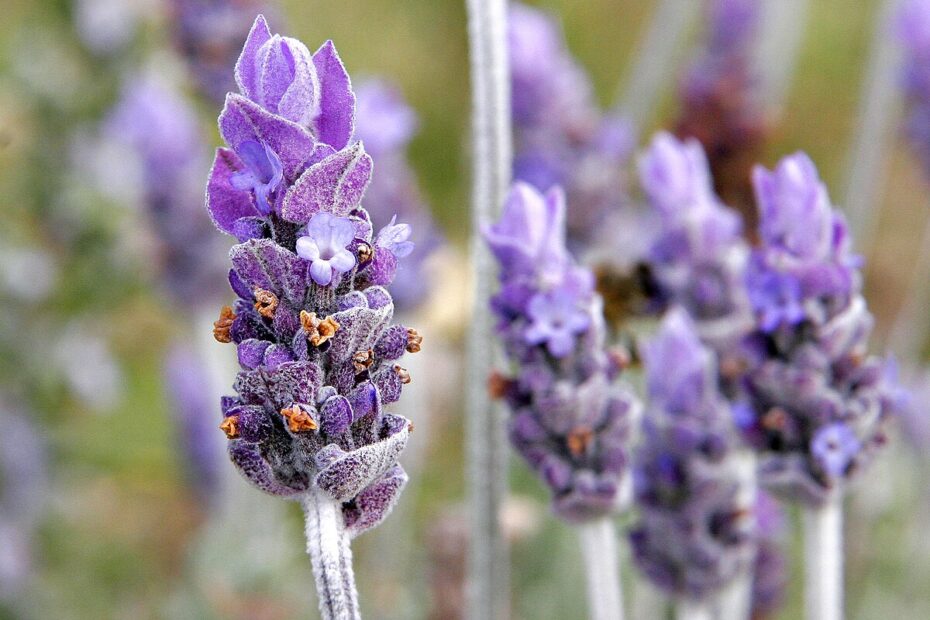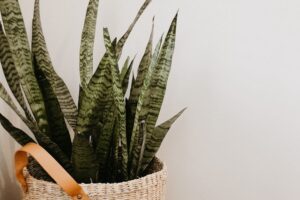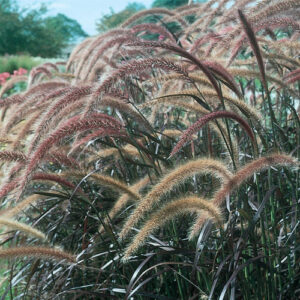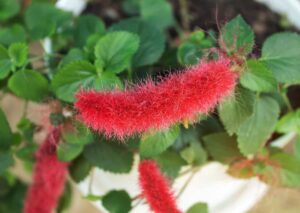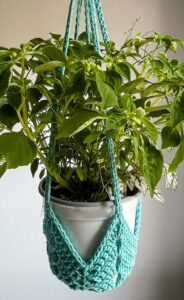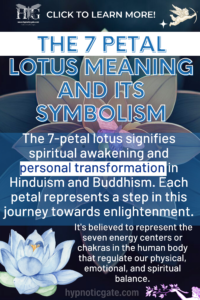English lavender is a fragrant flower with a long history.
Today, English lavender is still a popular choice for gardens and bouquets, and it is also used in a variety of products, including essential oils, perfumes, and soaps.It has been used for centuries for its medicinal and culinary properties, and its beautiful blooms have been admired for their beauty..
In this article, we will take a closer look at English lavender, exploring its history, uses, and cultivation. We will also learn about the different varieties of English lavender, and how to choose the right one for your garden. So if you are interested in learning more about this fascinating flower, read on!

English Lavender: A Fragrant Flower with a Long History

English lavender (Lavandula angustifolia) is a herbaceous perennial plant in the mint family Lamiaceae. It is native to the Mediterranean region, but has been cultivated for centuries throughout Europe and Asia. English lavender is a popular ornamental plant, and its essential oil is used in a variety of products, including perfumes, soaps, and candles.
Botanical Characteristics
English lavender is a bushy, upright plant that typically grows to 2-3 feet tall. The leaves are narrow and lance-shaped, and they are covered in a silvery-white pubescence. The flowers are borne in terminal spikes, and they are typically a deep purple color. English lavender blooms in late summer and early fall.
Cultivation and Uses
English lavender is a relatively easy plant to grow, and it can be grown in a variety of climates. It prefers full sun and well-drained soil. English lavender can be propagated by seed, cuttings, or division.
English lavender is a popular ornamental plant, and it is often used in gardens, borders, and rock gardens. It is also a popular cut flower. The essential oil of English lavender is used in a variety of products, including perfumes, soaps, and candles. English lavender essential oil is also used for its medicinal properties, and it is said to promote relaxation and sleep.
History
English lavender has been cultivated for centuries, and it is mentioned in the writings of ancient Greek and Roman authors. The plant was used for its medicinal properties, and it was also used in religious ceremonies. English lavender was introduced to North America by European colonists in the 17th century. The plant quickly became popular, and it is now grown in many parts of the United States and Canada.
Conclusion
English lavender is a beautiful and versatile plant that has a long history of use. It is a popular ornamental plant, and its essential oil is used in a variety of products. English lavender is also a medicinal herb, and it is said to promote relaxation and sleep.
The History of English Lavender
The History of English Lavender
English lavender (Lavandula angustifolia) is a fragrant herb that has been used for centuries for its medicinal and culinary properties. It is native to the Mediterranean region, but it has been cultivated in England since the 16th century.
- Early uses of English lavender
In the Middle Ages, English lavender was used to treat a variety of ailments, including headaches, colds, and stomach problems. It was also used as a perfume and in religious ceremonies.
- English lavender in the modern world
Today, English lavender is still used for its medicinal properties. It is a popular ingredient in essential oils, bath products, and perfumes. It is also grown as an ornamental plant and for its culinary uses.
Table of English lavender cultivars
| Cultivar | Description |
|---|---|
| Munstead | A hardy cultivar with dark purple flowers |
| Hidcote | A compact cultivar with light purple flowers |
| Grosso | A large cultivar with dark purple flowers |
| Phenomenal | A vigorous cultivar with light purple flowers |
| Munstead Dwarf | A dwarf cultivar with dark purple flowers |
References
- Lavender
- English lavender
The Cultivation of English Lavender
The Cultivation of English Lavender
English lavender (Lavandula angustifolia) is a hardy perennial shrub that is native to the Mediterranean region. It is a popular garden plant, and its essential oil is used in a variety of products, including perfumes, soaps, and lotions. English lavender is easy to grow, and it can be grown in a variety of climates.
Soil
English lavender grows best in well-drained soil that is rich in organic matter. The soil pH should be between 6.0 and 7.0. If the soil is too acidic, you can add lime to raise the pH. If the soil is too alkaline, you can add sulfur to lower the pH.
Sunlight
English lavender needs full sun to thrive. It will tolerate some shade, but it will not flower as well in shaded areas.
Watering
English lavender needs regular watering, especially during the summer months. The soil should be kept moist, but not soggy.
Fertilizing
English lavender does not need a lot of fertilizer. A light application of compost or manure in the spring is all that is needed.
Pruning
English lavender should be pruned in the spring to remove any dead or damaged branches. You can also prune the plant to keep it in shape.
Harvesting
English lavender can be harvested in the summer months. The flowers are the most fragrant when they are just starting to open. To harvest the flowers, cut them off with a pair of scissors.
Propagation
English lavender can be propagated by seed, cuttings, or division.
- Seed: English lavender seeds can be started indoors in the spring. The seeds should be sown in a well-drained potting mix. The seedlings should be transplanted outdoors after the last frost.
- Cuttings: English lavender cuttings can be taken in the spring or summer. To take a cutting, cut a stem from the plant that is about 6 inches long. Remove the leaves from the bottom half of the cutting. Dip the cutting in rooting hormone and plant it in a well-drained potting mix. The cutting should root in about 4-6 weeks.
- Division: English lavender can be divided in the spring or fall. To divide the plant, dig up the root ball and carefully separate the roots into two or more sections. Replant the divisions in separate pots or in the garden.
English lavender is a beautiful and fragrant plant that is easy to grow. With a little care, you can enjoy this lovely plant in your garden for many years to come.
The Benefits of English Lavender
English lavender is a fragrant flower with a long history of use in medicine and aromatherapy. It is native to the Mediterranean region, but it is now grown in many parts of the world. The plant has been used for centuries to treat a variety of ailments, including anxiety, depression, insomnia, and pain.
English lavender is a versatile herb that can be used in a variety of ways. It can be added to teas, tinctures, and essential oil blends. It can also be used in skin care products, such as soaps, lotions, and perfumes.
Here are some of the benefits of English lavender:
- It can help to relieve anxiety and stress.
- It can promote relaxation and sleep.
- It can help to reduce pain.
- It can improve skin health.
- It can help to boost the immune system.
If you are interested in using English lavender for its health benefits, talk to your doctor or a qualified herbalist. They can help you determine the best way to use lavender for your individual needs.
Using English Lavender in Cooking
Using English Lavender in Cooking
English lavender is a versatile herb that can be used in a variety of dishes. It has a delicate flavor and aroma that pairs well with both sweet and savory dishes.
Here are a few ways to use English lavender in cooking:
- Infuse lavender into honey. Add a few sprigs of lavender to a jar of honey and let it steep for a few weeks. The honey will take on the flavor and aroma of the lavender.
- Add lavender to tea. Brew a cup of tea and add a few drops of lavender essential oil. The lavender will add a floral touch to the tea.
- Use lavender in baked goods. Add lavender to muffins, cakes, cookies, and other baked goods. The lavender will add a subtle flavor and aroma.
- Stir lavender into yogurt or ice cream. Lavender pairs well with both sweet and tangy flavors. Try adding it to yogurt or ice cream for a refreshing treat.
- Use lavender in savory dishes. Lavender can be used in soups, stews, sauces, and marinades. It pairs well with meats, fish, and vegetables.
Here are some tips for using English lavender in cooking:
- Use fresh lavender whenever possible. Dried lavender can be used, but it will have a stronger flavor.
- Start with a small amount of lavender and add more as needed. The flavor of lavender can be overpowering, so it’s important to add it gradually.
- Experiment with different ways to use lavender in cooking. There are many different ways to enjoy the flavor and aroma of this versatile herb.
English lavender is a delicious and versatile herb that can be used in a variety of dishes. Whether you’re looking for a sweet treat or a savory meal, lavender can add a touch of flavor and fragrance.
English Lavender Crafts and Gifts
English Lavender Crafts and Gifts
English lavender is a fragrant flower with a long history of use in crafts and gifts. The flowers can be dried and used to make potpourri, sachets, and wreaths. They can also be used to make essential oil, which is used in a variety of products, including perfumes, soaps, and lotions.
In addition to its use in crafts and gifts, English lavender is also a popular ingredient in culinary dishes. The flowers can be added to salads, soups, and stews. They can also be used to make lavender honey and lavender ice cream.
If you are looking for a unique and fragrant way to show your loved ones how much you care, consider giving them a gift made with English lavender. Here are a few ideas:
- A lavender sachet filled with dried flowers can be used to scent a drawer or closet.
- A lavender wreath can be hung on a door or wall to add a touch of fragrance to a room.
- A bottle of lavender essential oil can be used to add a relaxing scent to a bath or diffuser.
- A lavender honey made with local honey is a delicious and unique gift that anyone will appreciate.
English lavender is a beautiful and versatile flower that can be used to create a variety of beautiful and fragrant crafts and gifts. With its long history of use, English lavender is sure to be a hit with anyone who receives it.
Table of Contents
- English Lavender Crafts
- English Lavender Gifts
FAQ
Q: What is English lavender?
A: English lavender (Lavandula angustifolia) is a perennial herb in the mint family. It is native to the Mediterranean region, but has been cultivated in England for centuries. English lavender is a popular ornamental plant, and its essential oil is used in a variety of products, including perfumes, soaps, and candles.
Q: What is the history of English lavender?
A: The use of lavender dates back to ancient Egypt, where it was used in perfumes and incense. The Greeks and Romans also used lavender for its medicinal properties. English lavender was introduced to England in the 16th century, and it quickly became a popular garden plant. In the 18th century, English lavender was used to make lavender water, which was a popular perfume and beauty product.
Q: What are the different varieties of English lavender?
A: There are many different varieties of English lavender, but the most common are:
- Lavandula angustifolia ‘Hidcote’: This variety has dark purple flowers and is very hardy.
- Lavandula angustifolia ‘Munstead’: This variety has light purple flowers and is a bit more delicate than ’Hidcote’.
- Lavandula angustifolia ‘Nana Alba’: This variety has white flowers and is very compact.
Q: How do you grow English lavender?
A: English lavender is easy to grow in most climates. It prefers full sun and well-drained soil. Lavender can be propagated from seed, cuttings, or division. Once established, English lavender is drought-tolerant and requires little maintenance.
Q: What are the benefits of English lavender?
A: English lavender has many benefits, including:
- It is a beautiful ornamental plant.
- It attracts pollinators, such as bees and butterflies.
- It has a calming and relaxing scent.
- The essential oil of English lavender has antibacterial, antifungal, and anti-inflammatory properties.
- English lavender can be used to make tea, essential oil, and other products.
Q: How can I use English lavender?
A: English lavender can be used in a variety of ways, including:
- Adding it to your garden.
- Using it to make tea.
- Diluting the essential oil with a carrier oil and applying it to the skin.
- Using it in a diffuser to create a calming atmosphere.
- Adding it to bath products to promote relaxation.
Wrapping Up
English Lavender: A Fragrant Flower with a Long History
English lavender is a fragrant flower with a long history.
Today, English lavender is still a popular choice for gardens and home decor, and its essential oil is used in a variety of products, from perfumes to soaps to candles.It has been used for centuries for its medicinal and culinary properties, and its beautiful blooms have been admired by poets and artists alike..
If you’re looking for a beautiful and fragrant addition to your garden, English lavender is a great option. It’s easy to grow and care for, and it will provide you with years of enjoyment. So why not give it a try? You might just be surprised at how much you love it.
Here are some tips for growing English lavender:
- Choose a sunny spot in your garden. English lavender needs full sun to thrive.
- The soil should be well-drained and sandy.
- Water regularly, but don’t overwater.
- Fertilize once a year in spring.
- Deadhead spent flowers to encourage new blooms.
- English lavender is hardy to USDA zones 5-9.
With a little care, you can enjoy English lavender for years to come.
- Cat Palm vs Majesty Palm: Which Should You Choose? - June 30, 2024
- Flowers That Survive Winter: Discover the Exceptional No. 5 - June 30, 2024
- The Ultimate Guide to the Growth and Care of the Black Pagoda Lipstick Plant - June 29, 2024
